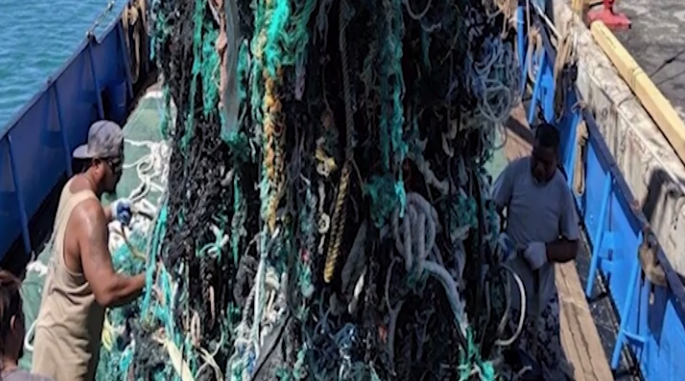
1.Why did environmentalists choose the sea between Hawaii and California?
A The Ocean Voyages Institute liked the place.
B Amounts of plastic trash accumulated there.
C It had only 40 tons of plastic in that place.
D The weather in that place was quite warm.
解析:选B。细节理解题。根据文章第一段最后一句the biggest concentration of floating debris in the world可以得知垃圾都聚集在那个地方,故选B。
2.What danger would the small ghost nets may bring?
A They couldn’t remove bottles.
B They were too heavy to carry.
C They added much more plastic.
D They would do harm to sea animals.
解析:选D。推理判断题。根据文章第二段最后一句the small ghost nets that get wrapped around whales and dolphins and kill them可以得知小的网会对鲸鱼和海豚等海洋动物造成伤害,故选D。
3.How will the artists deal with the collected plastic?
A It will be turned into the energy.
B It will be made into artificial arts.
C It will be piled as a very large island.
D It will be changed into a large net.
解析:选B。推理判断题。根据文章第三段第二句The artists plan to transform the plastic into sculptures and other works可以得知大学毕业生和艺术家们会把这些塑料垃圾加工成艺术品,故选B。
4.How did the debris endanger wildlife?
A It brought ocean currents.
B It stopped the cleanup expedition.
C It made the fish trapped.
D It damaged their foods.
解析:选C。细节理解题。根据文章最后一段第二句的these areas of debris endanger wildlife when animals become trapped in the trash or eat it可以得知海洋垃圾会缠住那些鱼类,故选C。